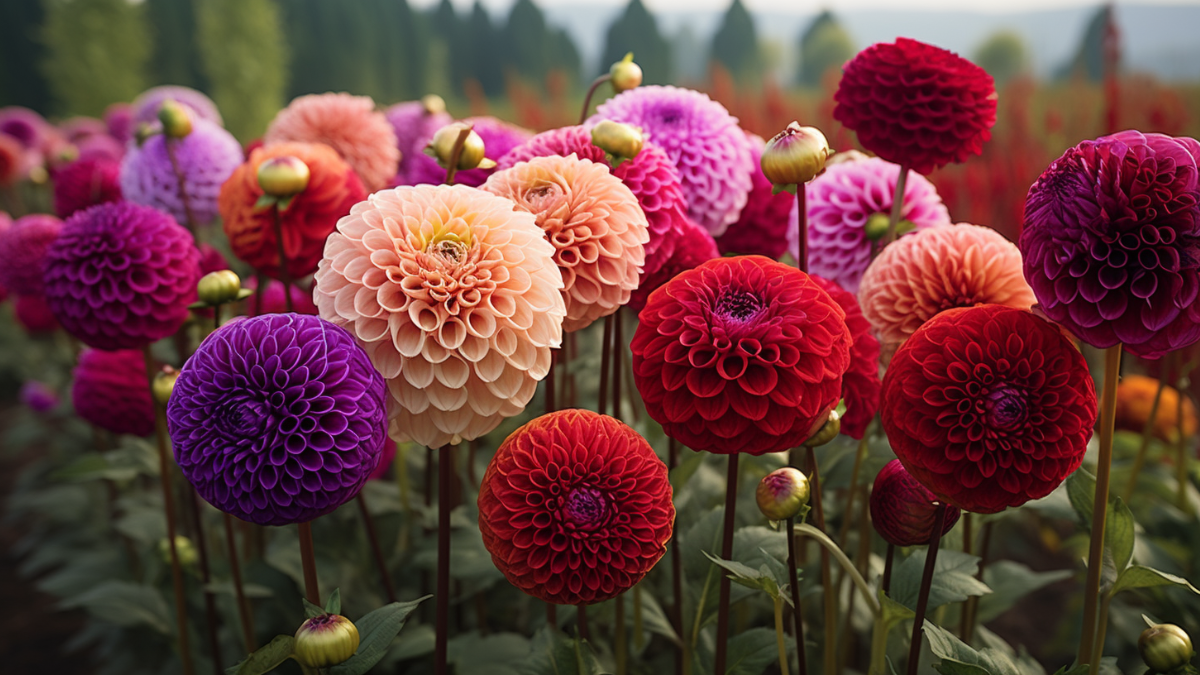If you’re a gardening enthusiast, you probably know that dahlias are stunning and vibrant flowers that add a touch of elegance to any garden. These tuberous perennials are a joy to grow, but like any living organism, they can face challenges, and at times, some of their tubers may not survive. In this article, we will dive into the world of dahlias and explore how to determine if their tubers are dead or alive, helping you make informed decisions for your beloved garden.
Introduction: The Allure of Dahlias and Their Tuberous Secrets
Dahlias are renowned for their beautiful blooms, diverse colors, and intricate petal patterns. Behind their striking appearance lies a hidden secret – their tuberous roots. Dahlia tubers are swollen underground storage organs responsible for sustaining the plant during unfavorable conditions, such as winter frost. But, like any part of nature, they are susceptible to various issues, and it’s essential for gardeners to know how to identify if these tubers are still viable.
Signs of Life: Healthy Dahlia Tubers
Before jumping into the realm of potential tuber problems, let’s take a look at the signs that indicate your dahlia tubers are thriving:
- Firmness: Healthy dahlia tubers are firm to the touch and should not feel mushy or soft. When gently squeezed, they should have a solid texture, indicating good moisture content.
- Sprouting Eyes: Check for the presence of “eyes” on the tuber, which are small, raised points from which new growth emerges. Sprouting eyes are a promising sign of a living tuber.
- Healthy Color: Vibrant and healthy dahlia tubers often have a brownish or reddish hue. Any signs of mold or discoloration could be a cause for concern.
- No Foul Smell: Healthy tubers should not emit any foul or rotting odor. A strong, unpleasant smell could indicate decay.
Trouble in the Tuber World: How to Identify Dead Dahlia Tubers
As much as we hope for every tuber to flourish, sometimes certain challenges can cause tubers to perish. Here are the key indicators that suggest your dahlia tubers might be dead:
- Soft and Mushy Texture: If your dahlia tubers feel soft, squishy, or waterlogged, it’s likely that they have succumbed to rot and are no longer viable.
- Lack of Sprouting Eyes: If you inspect the tuber carefully and find no visible sprouting eyes or signs of new growth, it could indicate that the tuber is dead.
- Discolored and Shriveled: Dahlia tubers that appear discolored, shriveled, or have developed a wrinkled appearance may have experienced dehydration and are unlikely to recover.
- Mold and Foul Smell: The presence of mold or a pungent smell is a clear sign of decay and indicates that the tuber is no longer healthy.
Performing the “Pinch Test”
The “pinch test” is a simple yet effective way to assess the viability of your dahlia tubers. Gently pinch or press the tuber with your fingers – if it feels firm and solid, it’s likely alive. Conversely, if it feels soft, mushy, or shows signs of decay, it’s probably time to bid farewell to that particular tuber.
Conclusion: Nurturing Your Dahlia Garden
In the world of gardening, challenges are inevitable, and dahlia tubers are no exception. By familiarizing yourself with the signs of healthy and dead tubers, you can make well-informed decisions to support the growth of your Dahlia garden. Remember to inspect your tubers regularly and provide them with optimal growing conditions to encourage their vitality and resilience.
As a gardener, you hold the power to nurture and cherish your dahlia tubers, ensuring they thrive and grace your garden with their spectacular blooms season after season. Happy gardening, and may your dahlia garden be a flourishing testament to your care and love for nature’s wonders!



